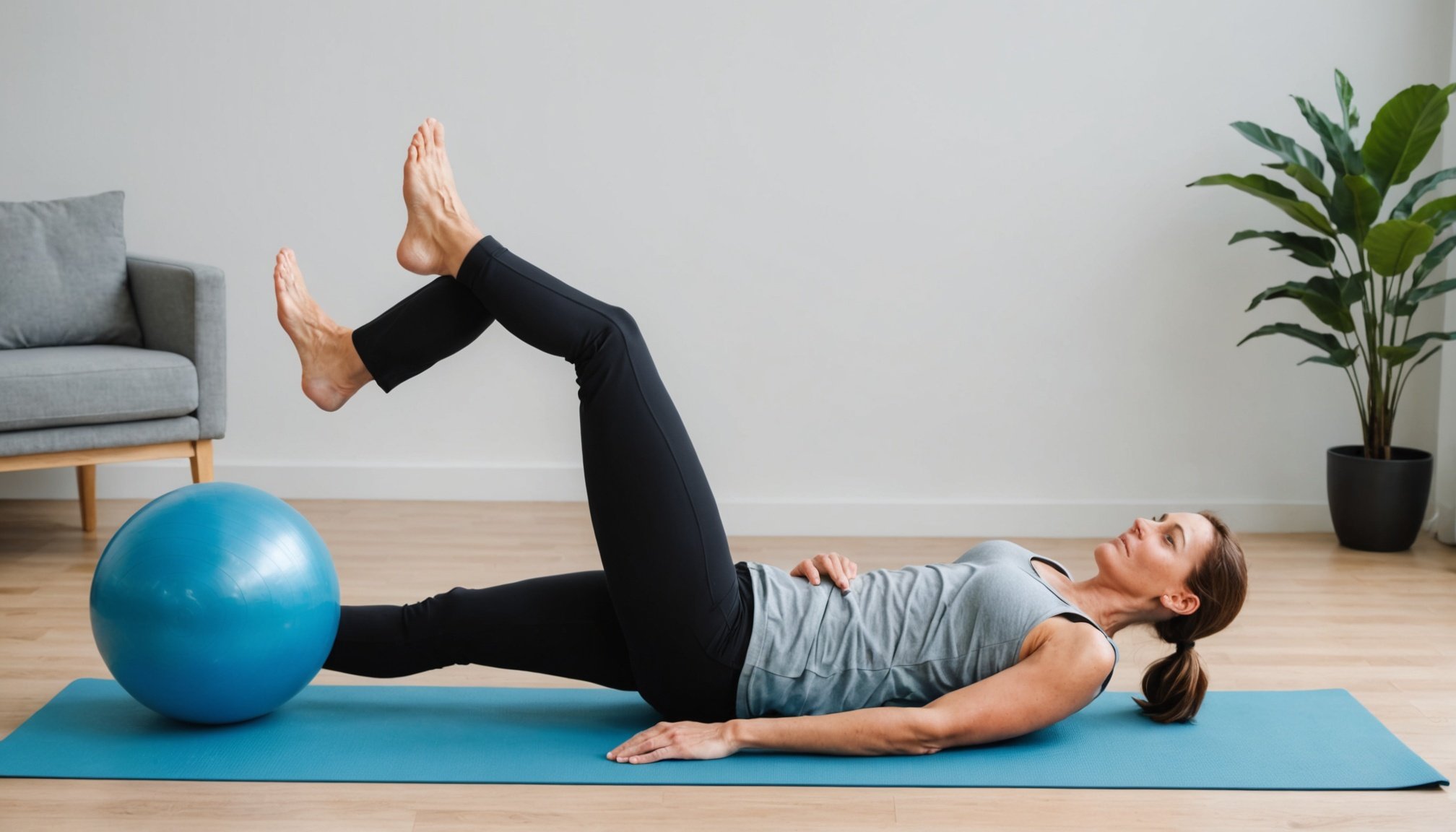Understanding Core Strength in Pilates
Core strength forms the foundation of overall fitness. It is essential for maintaining stability, balance, and performing various physical activities. The core isn’t limited to just the abdominal muscles; it encompasses all muscles between the diaphragm and pelvis, including the back and oblique muscles.
Pilates is a unique exercise regimen specifically designed to fortify these core muscles. It emphasizes precise movements and controlled breathing, directly engaging the core for optimized results. Unlike many fitness routines, Pilates delves into the basics with a deep concentration on building core stability and alignment.
Have you seen this : Exploring the Impact of Alkaline Foods on Inflammation in Chronic Urticaria Sufferers
A healthy spine is a direct benefit of robust core strength. By targeting core muscles, Pilates assists in maintaining the natural curvature of the spine, thus ameliorating posture issues and reducing the risk of back injuries. When core muscles are weak, the spine bears more strain, leading to discomfort and potential injuries.
Regular Pilates practice efficiently refines core muscles through exercises like leg lifts, plank holds, and pelvic curls. These not only strengthen but also stretch and elongate the spine, promoting a healthier, more flexible body structure. Overall, investing in core strength through Pilates can lead to improved spinal health and greater overall well-being.
Also to discover : Exploring the Benefits of Outdoor Activities: A Natural Approach to Alleviating Depression Symptoms
How Pilates Alleviates Sciatica Pain
Sciatica is a condition characterized by radiating pain along the sciatic nerve, which typically occurs due to compression. Common causes include herniated discs, bone spurs, or spinal stenosis. Pilates, with its focus on core strength and flexibility, offers promising techniques for sciatica relief. By targeting the body’s core muscles, Pilates helps in improving posture and alleviating pressure on the sciatic nerve.
One of the primary Pilates benefits is its emphasis on controlled, low-impact movements that support pain management. Techniques such as pelvic tilts, spine stretching, and specific breathing exercises are pivotal in reducing tension around the lower back, thus providing relief.
Research shows that regular Pilates practice can be beneficial for those suffering from sciatica. Studies have highlighted the effectiveness of these exercises in improving mobility and reducing discomfort. Experts agree that building core strength through Pilates can contribute significantly to spinal alignment, reducing pressure on the sciatic nerve and relieving pain.
For those seeking sciatica relief, incorporating Pilates into a regular routine can be a practical approach. With its gradual, structured movements, it not only aids in pain relief but also enhances overall body awareness, contributing to long-term body health.
Key Pilates Techniques for Core Strength and Sciatica Relief
Pilates offers a variety of exercises aimed at enhancing core strength, increasing mobility, and alleviating sciatica discomfort. Let’s explore three essential exercises and their unique benefits.
The Hundred
The Hundred is a classic Pilates exercise known for building core strength while boosting circulation. To perform this, lie on your back with your legs in a tabletop position, raise your head and shoulders, and pump your arms vigorously, inhaling for five counts and exhaling for five more. This continuous breathing cycle, done for ten sets, not only strengthens the abdominals but also enhances stamina. For those with limited mobility, you can modify by keeping your feet flat on the ground.
Pelvic Tilts
Pelvic tilts are excellent at promoting lower back flexibility and mobility. Begin by lying down with knees bent and feet flat. Gently rock your pelvis upward, then flatten your back against the mat, executing a subtle spinal articulation. This exercise should be performed in a controlled manner with ten repetitions, focusing on the quality of movement rather than speed.
Spine Stretch Forward
The Spine Stretch Forward targets back flexibility, essential for those dealing with sciatica. Sit tall with legs extended and bend forward slowly while exhaling, imagining reaching over a barrel. This movement encourages spinal articulation and lengthening, with modifications such as bending the knees for increased accessibility. Aim for five to eight controlled stretches.
Developing a Regular Pilates Practice
Incorporating Pilates into your weekly routine doesn’t have to be daunting. Start by identifying what times work best for you. Whether mornings energise you or evenings help you unwind, fitting Pilates into these slots increases the likelihood of consistency.
The importance of consistency cannot be overstated. Regular practice fosters muscle memory and enhances the physical benefits over time. It’s not just about physical transformation but improving overall mobility and strength.
Personalising your Pilates routine makes it more enjoyable and suitable for your fitness goals. Tailor exercises to fit your capacity, adjusting intensity as you progress. This person-centric approach fosters motivation and discipline in your practice.
To track progress, employing both traditional methods, like journaling, and modern solutions, such as mobile apps, could prove beneficial. Mark improvements in flexibility, strength, or endurance over weeks or months to understand your fitness journey better.
Furthermore, don’t hesitate to adjust your routine. Life changes are inevitable. Periodically review your schedule and priorities. If a routine isn’t effective anymore, tweak it. Your Personalized Practice should evolve with your needs, ensuring you continue reaping the long-term benefits of Pilates.
Testimonials and Case Studies
Exploring real-life success stories from people who have embraced Pilates for sciatica can offer compelling insights into its benefits. Anecdotal evidence reveals that many individuals have experienced notable improvements in nerve pain relief and overall wellbeing. Harry, a long-term Pilates practitioner, reports finding relief from chronic pain that he thought was permanent. These personal accounts underscore the transformative potential of Pilates routines targeting core muscle groups.
Instructors have observed similar outcomes among their students, reinforcing the value of Pilates as more than just a workout — it’s a community-driven journey. Feedback consistently highlights enhanced flexibility and stability, key factors in reducing pain flare-ups. Pilates studios have become rewarding spaces where improved mobility and shared experiences cultivate a sense of belonging.
Case studies further support these observations. Participants with severe sciatica frequently display increased core strength, alongside pain reduction, following consistent Pilates sessions. This holistic approach often extends beyond physical improvements, fostering positive mental health impacts as well. The blend of personal stories and documented community experiences paints a vivid picture of the profound benefits Pilates offers its practitioners. Providing a path not just to pain management, but also to reclaiming quality of life.
Precautions and Variations for Beginners
When embarking on a Pilates journey to alleviate sciatica, understanding safe practices is crucial. Sciatica sufferers should be mindful of common pitfalls. For example, overexertion and incorrect form can exacerbate discomfort. It’s essential to cultivate patience and listen to one’s body to avoid further injury.
Beginner modifications play an important role. Adapting exercises like the pelvic tilt and cat-cow stretch can ease newcomers into core-strengthening routines without undue strain. For instance, using supportive props or reducing the range of motion can make exercises more approachable and effective, catering to the individual’s needs and physical condition.
Injury prevention is paramount, and consulting a healthcare provider before starting a Pilates program is highly recommended. Healthcare professionals can offer tailored advice that suits your specific condition, ensuring optimal results and minimising risks.
Incorporating gentle variations in your routine not only aids in building strength gradually but also enhances flexibility and supports overall well-being. Remember to focus on controlled movements and steady progress. Pilates, when approached mindfully, can be a valuable tool in managing sciatica, optimising both physical health and comfort.











